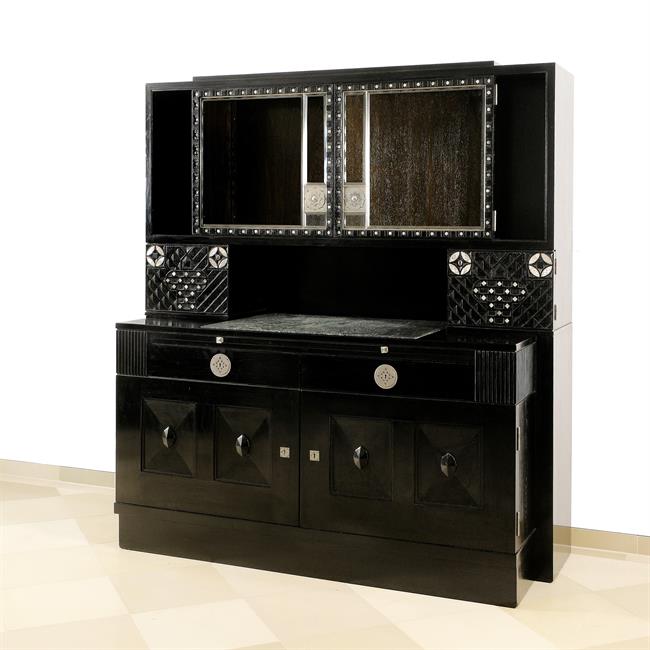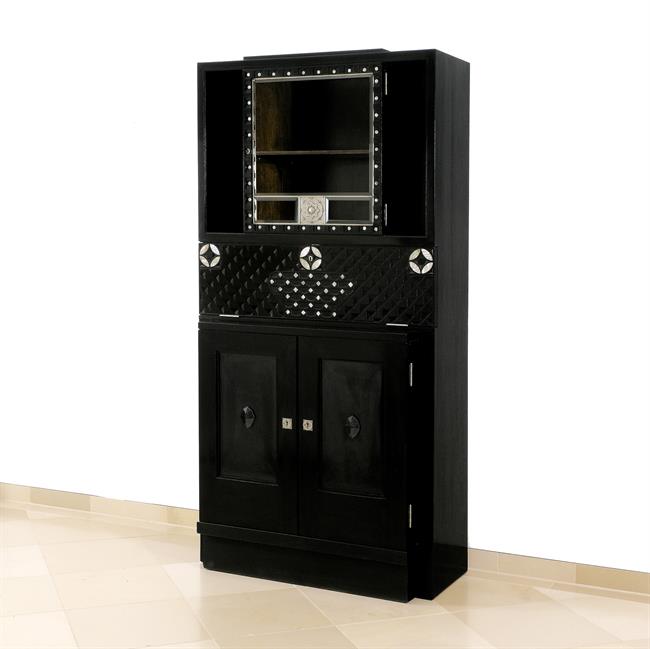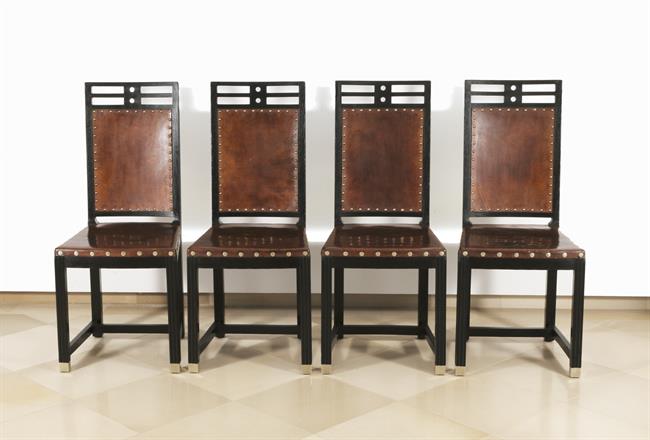 Sideboard
design around 1905
Sideboard
design around 1905
Joseph Maria, zugeschrieben Olbrich
Troppau, Schlesien 1867 - 1908 DüsseldorfJoseph Maria Olbrich was born in 1867 as the son of a well-to-do master pastry cook and owner of a brickyard in Troppau, in what was then Silesia (today part of the Czech Republic). At first he worked as technical draughtsman but in 1882 he left for Vienna to attend the architecture class at the Staatsgewerbeschule. In 1890 he began to study at the Academy of Fine Arts under Carl Freiherr von Hasenauer. From 1893 until 1899, he worked as draughtsman in the office of Otto Wagner. Olbrich was probably responsible for most detailed blueprints for the Vienna Stadtbahn buildings. In 1896, led by Gustav Klimt, the “Wiener Secession” splintered off from the “Wiener Künstlerhaus”. In 1897/98 Joseph Maria Olbrich, a founding member of “Wiener Secession”, designed the Secession exhibition hall that was to become a landmark of modern architectural design. Striving for the “Gesamtkunstwerk” (“the total art work”), Olbrich also applied himself to interior decoration and arts and crafts designs. Subsequently he designed several private homes in Vienna and surroundings, among others the home of Hermann Bahr. In 1899 he was commissioned to design the “Artists’ Colony” in Darmstadt. In Germany he designed numerous other – partly unrealized – buildings and urban projects (Dusseldorf, Cologne, Berlin). The Olbrich House in St. Pölten survived as one of only a handful of buildings by Joseph Maria Olbrich.
-
Sideboard design around 1905
-
Cabinet design around 1900
-
Table with Four Chairs Design around 1900

 Cabinet
design around 1900
Cabinet
design around 1900
 Table with Four Chairs
Design around 1900
Table with Four Chairs
Design around 1900